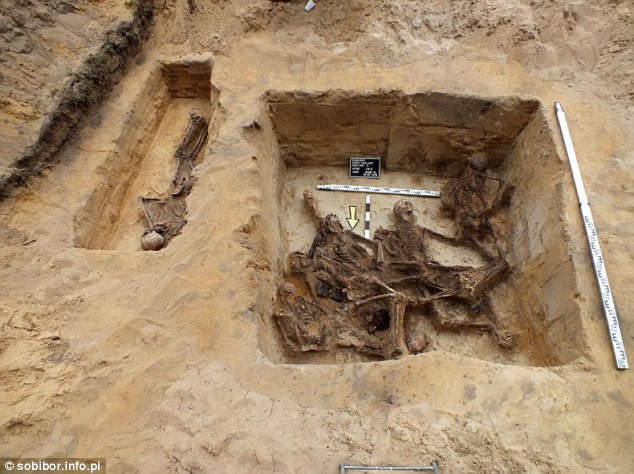The Nazi extermination camp at Sobibór in south-east Poland was part of the worst phase of the Holocaust – called ‘Operation Reinhard’. There is now a memorial and a museum at Sobibór, and museum officials have recently reported a disturbing account of the discovery that mass graves on the site have been looted.
A major archaeological project is underway at the camp, and in the course of the work archaeologists found evidence of past excavations. It is believed that the graves were amateurishly excavated within the last two years by looters, possibly looking for gold fragments from teeth.
Sobibór, together with Treblinka and Belzec was built for the express purpose of mass-murdering Polish Jews in gas chambers. The aim was for each camp to kill thousands of people a day as efficiently as possible. Treblinka, the last camp to be opened was so efficient that within 15 months between 800.000 and 1.2 million people were killed there. Operation Reinhard began in March 1942 and ended in November 1943, by which time a total of two million Jews had been killed.
The extermination camps operated under conditions of great secrecy, with verbal orders about the operation coming to the officers concerned directly from Himmler. Jews arriving at the camps were fooled into thinking they were being processed for onward travel to ‘resettlement destinations’, so they didn’t panic, and slow down the killing process.
Secrecy was essential, but sometimes information leaked out. In January 1943, the code-breaking establishment at Bletchley park in England intercepted a top secret message from an SS source confirming that there had been 1,274,166 ‘arrivals’ at the four camps. The decoders didn’t realise the significance of this message at the time because they didn’t know about the extermination camps.
Following the closure of the camps, the Nazis set about removing evidence. Other prisoners were used to open mass graves and cremate the bodies in giant fire pits. Any bone residue was put into milling machines and ground to dust, which was put into freshly dug pits along with the cremation ashes.
A Polish- American historian Jan Gross has previously made claims that shortly after the end of the war hundreds of Russian soldiers and Polish people looted graves at Treblinka in the search for gold.
It is well-known that many stone fragments from Jewish graves in Polish cemeteries were used as building material in Polish houses, and in some cases tombstones have been used for pathways, the Mail Online reports.
